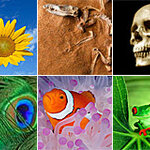Science Education & Policy

It's a cooker, a fridge and a generator in one, it uses thermoacoustics to convert biofuels to energy — and it could have a huge impact on the lives of people in the world's poorest communities, where access to electricity is extremely limited.
The SCORE (Stove for Cooking, Refrigeration and Electricity) project brings together experts from across the world to develop a wood-powered generator capable of both cooking and cooling food. By developing an affordable, versatile domestic appliance SCORE aims to address the energy needs of rural communities in Africa and Asia, where access to power…

Hormones in children's saliva may be a biological indicator of the trauma kids undergo when they are chronically bullied by peers, according to researchers who say biological markers can aid in the early recognition and intervention of long-term psychological effects on youth.
"Bullying is mainly self-reported either by students or observed by teachers," said JoLynn V. Carney, associate professor of counselor education at Penn State.
Carney and Richard Hazler, professor of counselor education at Penn State, looked at the hormone cortisol in students' saliva to evaluate its validity as a…

People deal with percentages every day: the performance of a stock portfolio, a sale at the department store, or the performance of a new hybrid car, are all often expressed as percent changes. As an everyday occurrence, calculating percentages should be second nature to the average person. "Not so," says Akshay Rao, professor of marketing at the University of Minnesota Carlson School of Management.
In the paper "When Two and Two is Not Equal to Four: Errors in Processing Multiple Percentage Changes," Rao and Haipeng Chen, a Carlson School doctoral alum and assistant professor at the…

What was it like to walk round the Colosseum when the Roman Empire was at its height? How would the experience have differed from that of a tourist today?
Our understanding of what life was like in bygone eras could be boosted, thanks to a new initiative aiming to depict more accurately and realistically how heritage sites may have looked in their heyday.
Computer scientists and cultural heritage researchers are assessing whether today's increasingly sophisticated 3-d computer technology can be combined with the most recent historical evidence to produce significantly improved visual…

Cultural differences between countries run right to the heart of government, thereby influencing technological innovation. This is reported in a comparative study by David Calef and Robert Goble published recently in the journal Policy Sciences(1). The authors outline efforts taken throughout the 1990s by both the US and French governments to adopt legislation fostering technological innovation to improve urban air quality by promoting clean vehicles, specifically electric vehicles (EVs). The study highlights the differences in approach and policy-making style by both governments and how this…

Food producers in developing countries still need to make many improvements before they can compete effectively on the world market. This is the conclusion from researchers at Wageningen University after their 4-year study. They studied similar production chains in various tropical areas and recorded their findings in a book: ´Tropical food chains, Governance regimes for quality management’.
A lot has to happen to a pineapple before it reaches us in the shop. How does the product reach the client in an optimal manner" How can the costs be kept to a minimum" How can maximum quality be…

Human beings are directly responsible for more than 110,000 chemical substances which have been generated since the Industrial Revolution.
Every year, we "invent" more than 2,000 new substances, most of them contaminants, which are emitted into the environment and which are consequently present in food, air, soil and water. Nonetheless, human beings are also victims of these emissions, and involuntarily (what is known in this scientific field as "inadvertent exposure"), every day humans ingest many of these substances which cannot be assimilated by our body, and are accumulated in the fatty…

The Encyclopedia of Life project will detail 1.8 million known plant and animal species in the format of an online archive. Each species will have its own page with descriptions, photographs, videos, and maps, compiled by experts.
It is hoped that the $100m USD (£50m GBP) archive will be complete in 10 years and that in addition to an educational tool, the archive will have value for conservation efforts.
The project will begin by harvesting information from existing databases, such as FishBase, which contains details of 29,900 extant fish species. Data input will begin with animals, then…

Some states spend as little as $35 per person each year on home- and community-based services for seniors, while other states spend more than $1,300 per person annually, according to previous research.
Regardless of how much was spent on home- and community-based services, the researchers found that doubling states' spending on services would reduce the risk of nursing home admission among childless seniors by 35 percent. Seniors who do not have children to help care for them are less likely to have to go into a nursing home if they live in a state that spends more on home- and community-…

Educating on vices -- asking people to think about bad behavior increases the likelihood of doing it
Does sex education promote sex among children or discourage it? What about drug campaigns?
"Research on attitude formation has increasingly recognized that attitudes can be comprised of separate negative and positive components which can result in attitude ambivalence," explain Gavin Fitzsimons (Duke University), Joseph C. Nunes (University of Southern California), and Patti Williams (University of Pennsylvania). "In the present research we focus on vice behaviors, those for which consumers are likely to hold both positive and negative attitudes. We demonstrate that asking consumers to…